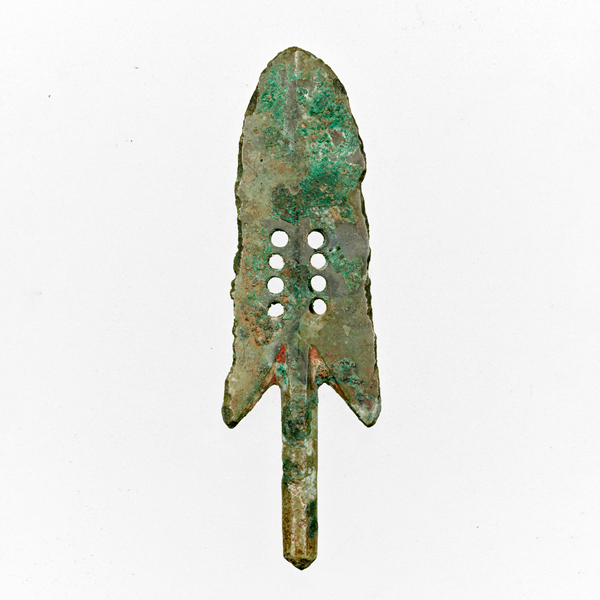Daily Tools of the Yayoi Period
-

Bronze Arrowhead
Found at the Kita Isshiki Site, Gifu, Yayoi period, 1st–3rd centuryJapanese Archaeology and Special Exhibition (Heiseikan) Japanese Archaeology Gallery
September 3, 2024 (Tue) - March 2, 2025 (Sun)In the Yayoi period (ca. 5th century BC–3rd century AD), polished stone and metal tools were introduced from China and the Korean Peninsula along with wet rice cultivation. Stone tools included rice reapers for harvesting, a range of polished axes and adzes for making wooden agricultural tools, and polished arrowheads that could have been used as weapons. These tools were subsequently made with iron.
| Designation | Name | Creation/ Excavation/ Provenance |
Period | Acquisition/ Ownership/ Accession Number |
CMT | ||
| Highlight | Wooden Hoe | Found at the Nagasaki Site, Shizuoka | Yayoi period, 2nd century BC–3rd century AD | Lent by Shizuoka Prefectural Education Commission | |||
| Highlight | Tip of Bronze Spade Blade | Found in Kasuga City, Fukuoka | Yayoi period, 1st–3rd century | J-36784 | |||
| Highlight | Polished Stone Axe | Found in Tatsuno Town, Nagano | Yayoi period, 2nd–1st century BC | J-7323 | |||
| Highlight | Bronze Arrowhead | Found at the Kita Isshiki Site, Gifu | Yayoi period, 1st–3rd century | J-10508 | |||
| Highlight | Octopus Trap Jar | Found at Yotsuike Site, Osaka | Yayoi period, 2nd century BC–3rd century AD | Gift of Mr. Maeda Chozaburo, J-10065 |
